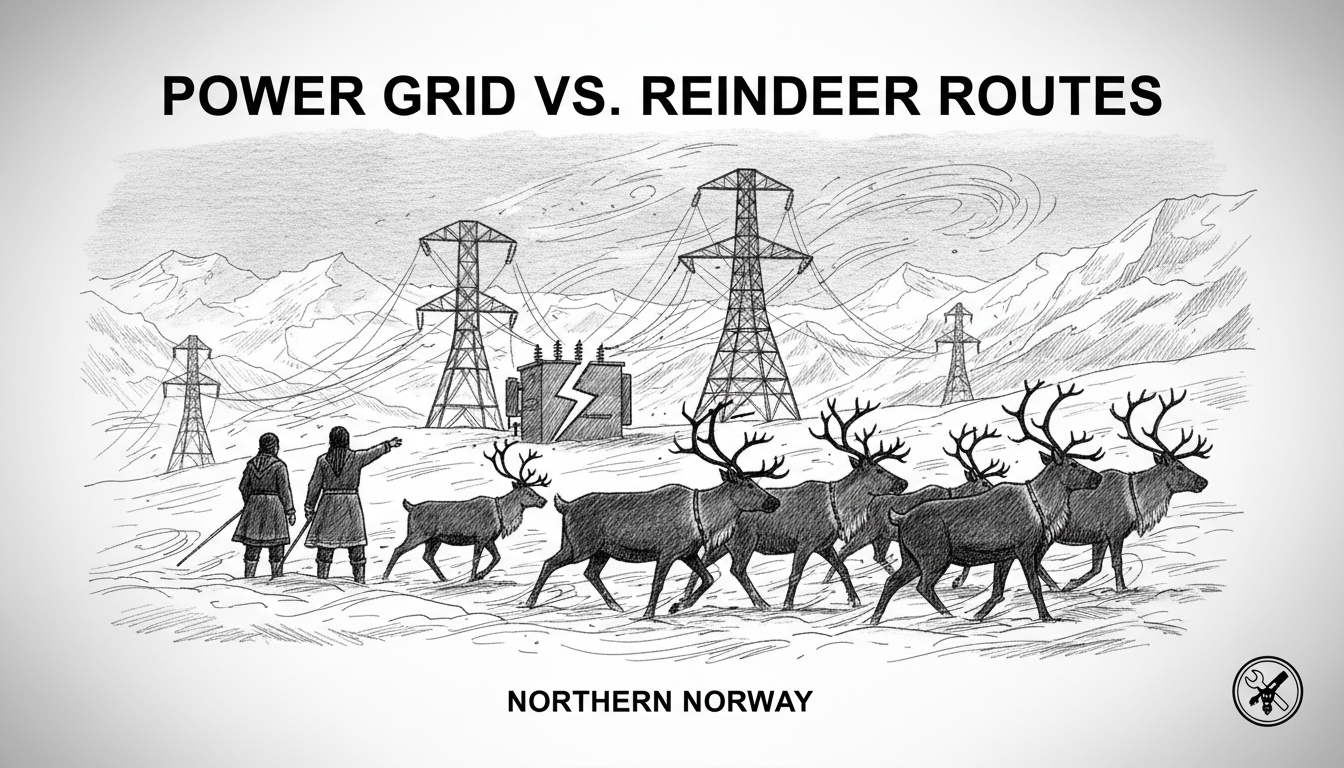Norwegian state power grid operator Statnett faces mounting resistance to its planned high-voltage power line in Finnmark. Local reindeer herders feel overrun by infrastructure plans that threaten their traditional way of life. The conflict centers on a proposed transformer station location that would disrupt crucial reindeer migration routes and slaughtering facilities.
John Arne Neshavn, deputy leader of reindeer grazing district 6 Várjjatnjárga, questions the approach. He asks whether authorities can simply come and take land that has sustained Sami reindeer herding for generations. The planned 420 kV power line aims to secure electricity supplies in northern Norway, particularly in Eastern Finnmark. But the transformer station's proposed location at Seidafjellet directly conflicts with vital reindeer herding infrastructure.
Seidafjellet serves as a migration path for nearly 11,000 reindeer moving between winter and summer grazing areas. The area also contains essential fencing and slaughtering facilities that have operated since the 1950s. Neshavn describes the gjerdeanlegg (fencing facility) as critically important for maintaining balance in reindeer numbers through controlled slaughter.
Recent years have seen repeated grazing crises declared in Finnmark, making these facilities even more crucial. Neshavn states flatly that the district cannot accept the station at this location. He describes feeling disrespected and overrun by the planning process.
The Norway Water Resources and Energy Directorate (NVE) has intervened, demanding more comprehensive assessments from Statnett before construction can proceed. Section leader Ingrid Myrtveit confirms that many parties have expressed negative views about the proposed location. NVE now requires Statnett to reconsider the station placement.
Statnett's communications advisor Ingrid Zimmermann acknowledges the company was aware of the conflict from the beginning. The power company evaluated four alternative locations for the transformer station in the Tana-Varangerbotn area. They proposed one alternative location, Seidafjellet C, but only if the reindeer fencing facility could be relocated.
This confrontation reflects broader tensions between infrastructure development and indigenous rights in northern Norway. The Sami Parliament and County Governor have both raised formal objections based on the consequences for reindeer husbandry. The case demonstrates how energy security ambitions must navigate complex cultural and environmental considerations.
The standoff continues as Statnett maintains hope for continued dialogue with reindeer herders. Meanwhile, herders await assurances that their centuries-old practices won't be sacrificed for modern infrastructure needs. The outcome could set important precedents for how Norway balances national energy needs with indigenous rights protection.
